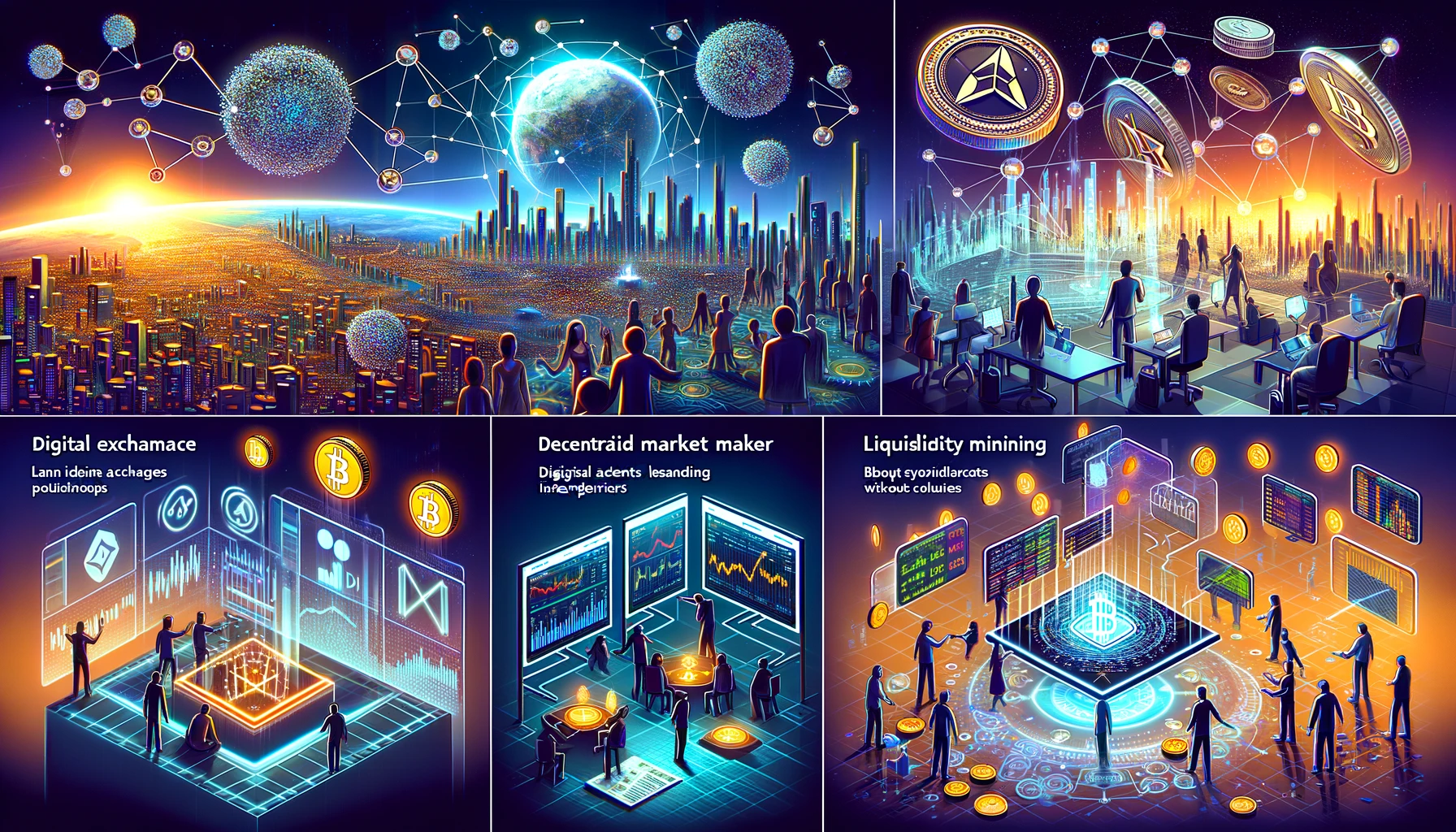
Decentralized Finance (DeFi): Revolutionizing the Financial Landscape with Blockchain
Introduction:
Decentralized Finance (DeFi) is reshaping the traditional financial landscape, offering a more inclusive, transparent, and efficient alternative powered by blockchain technology. In this blog, we’ll explore the fundamentals of DeFi, its key components, and its potential to revolutionize the way we interact with money and finance.
GET IN TOUCH
Schedule a Call
1. Understanding DeFi:
DeFi refers to a broad category of financial services and applications that operate on decentralized blockchain networks, removing the need for intermediaries like banks or brokerages. By leveraging smart contracts and cryptographic technology, DeFi protocols enable peer-to-peer lending, borrowing, trading, and more, all without the need for traditional financial institutions.
2. Key Components of DeFi:
a. Decentralized Exchanges (DEXs): DEXs facilitate peer-to-peer trading of digital assets, allowing users to trade directly with one another without the need for a centralized authority.
b. Automated Market Makers (AMMs): AMMs use algorithms to determine asset prices and facilitate liquidity provision, enabling efficient and automated trading on DEXs.
c. Lending and Borrowing Platforms: DeFi platforms allow users to lend their digital assets and earn interest or borrow assets using their existing holdings as collateral.
d. Yield Farming and Liquidity Mining: These strategies incentivize users to provide liquidity to DeFi protocols by rewarding them with additional tokens or fees.
3. Benefits of DeFi:
a. Financial Inclusion: DeFi opens up access to financial services for individuals who are underserved or excluded by traditional banking systems, including those in developing countries or without access to banking infrastructure.
b. Transparency and Security: Transactions on DeFi platforms are recorded on a public blockchain, providing transparency and reducing the risk of fraud or manipulation.
c. Programmability: DeFi protocols are highly programmable, allowing developers to create complex financial applications and automate processes using smart contracts.
d. Permissionless Innovation: Anyone can build and deploy DeFi applications without needing permission from centralized authorities, fostering innovation and experimentation in the financial sector.
4. Challenges and Considerations:
While DeFi offers many benefits, it also faces challenges such as scalability, security, and regulatory uncertainty. As the industry continues to mature, addressing these challenges will be crucial to realizing the full potential of DeFi while ensuring its long-term sustainability and adoption.

Conclusion:
Decentralized Finance (DeFi) represents a paradigm shift in the way we think about and interact with money and finance. By leveraging blockchain technology, DeFi offers a more inclusive, transparent, and efficient alternative to traditional financial systems. As the DeFi ecosystem continues to evolve and innovate, it has the potential to revolutionize the global financial landscape and empower individuals worldwide.
Keywords: DeFi, decentralized finance, blockchain, DEX, AMM, lending, borrowing, yield farming, financial inclusion

Leave a Reply